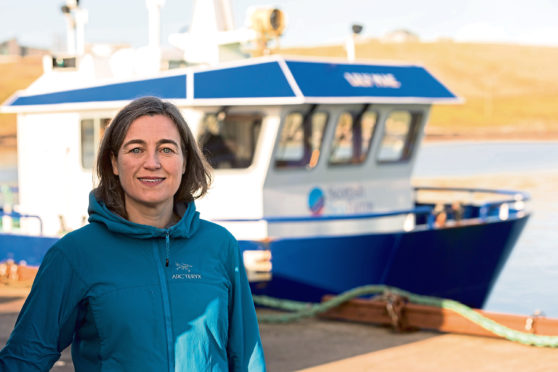Average sea lice levels on Scottish fish farms last year were the lowest in six years, according to figures announced by the sector’s trade body yesterday.
Shifting from the use of medicines to a range of other measures, including cleaner fish and fresh water treatments, helped the industry tackle problems with the parasites, Scottish Salmon Producers Organisation (SSPO) chief executive Julie Hesketh-Laird told the Fish Veterinary Society Conference.
Ms Hesketh-Laird said spending on medicinal remedies in the sector had dropped 47% to £9.7 million in the past three years.
Over the same period, investment in species such as wrasse and lumpfish, which pick the sea lice off the salmon in fish farm pens, and technologies including the hydrolicer and thermolicer, had totalled around £53.5m.
SSPO said companies’ spending on medicines had reduced to a level where it now represented just over 15% of total fish health management costs. The organisation also published farm-by-farm data showing the average monthly salmon survival rate last year was 99%.
The announcements yesterday at the conference, near Edinburgh, marked the start of a new SSPO-led reporting schedule for sea lice and salmon survival figures.
Companies will now report data after either one or two months rather than quarterly.
Ms Hesketh-Laird said: “In spite of changing and challenging marine conditions, salmon farmers are working successfully to innovate, collaborate, take action and manage fish health and welfare.”
She added: “Scotland is leading the world in the reporting of salmon survival data and in the sustained management of sea lice.
“This demonstrates our willingness to be open about our operations and standards of fish health and welfare.
“The sector’s reporting of its performance is above and beyond the many other levels of regulation and voluntary data already shared.
“From today, we will be publishing more current farm-by-farm sea lice and survival data, moving from the three-month reporting schedule we have worked to in the past.
“This enhanced level of transparency should reinforce trust in this important Scottish farming sector.”
Last November, Holyrood’s rural economy and connectivity committee said there should be more effective regulations to address fish health issues and minimise the environmental impact of the industry.
MSPs concerned over the impact of sea lice from fish farms called for a shift towards locating new operations away from wild salmon migratory routes.
